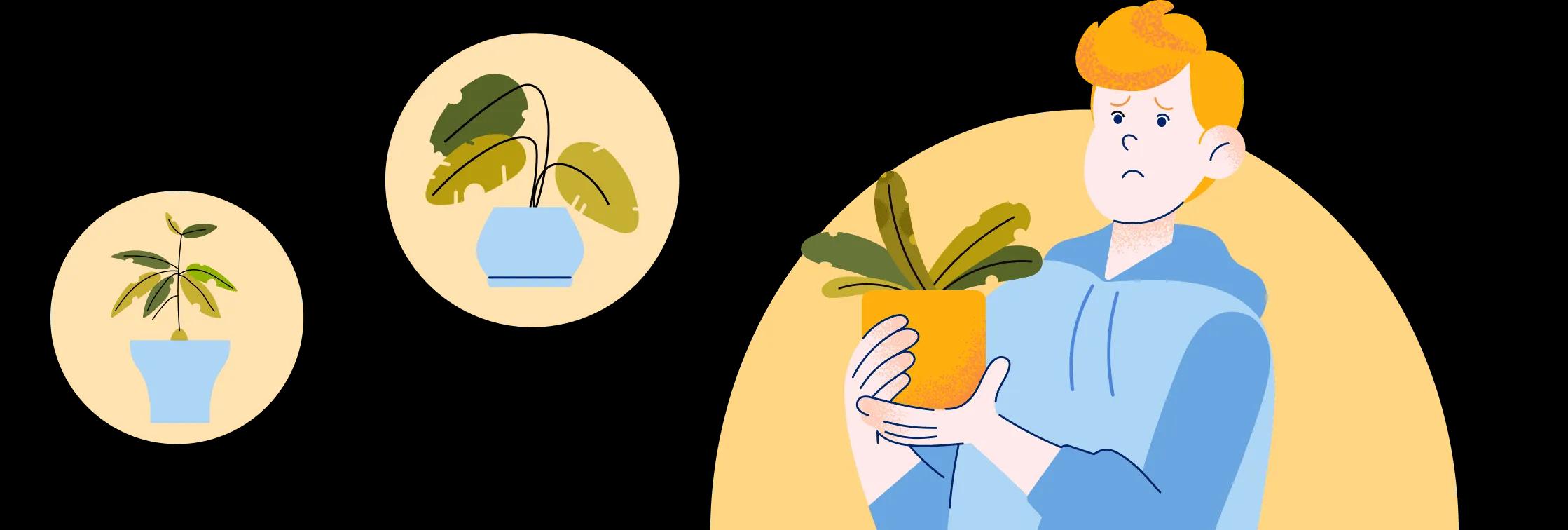Have you ever looked at your adorable plants asking yourself in terror: “What kind of bug is on my houseplant? What are these brown spots on the plant stem?” In most cases, pests are the culprits. Pests are insects that cause harm to gardens or indoor plants by feeding on sap or leaves. Eradicating pests often appears impossible since bugs can spread in a whirlwind manner. You can recognize them with the plant pests identification tool from PlantIn. Address our expert help to get a prudent answer to all your questions. Go on reading to find out how to control indoor plant pests.
How to Identify Plant Pests?
Efficient treatment of your plant heavily relies on the plant insects. Follow these steps for identification:
- Examine the plant closely, scrutinizing the lower leaf surface too.
- Look for spots, bites, or other bug traces like uncommon substances.
- Check the soil, digging into it a bit to see if there are no pests.
- Investigate lists with possible types of plants pests.
- If you see insects, study them carefully: pay attention to the size, color, wings, shell, amount of legs, and antennae.
Types of Plant Pests
Numerous insects feeding on plants can be found all around the world. Some of them thrive in particular climates with particular plants. The most common and widely spread are:
- Aphids are tiny bugs that come in different colors and suck plant juices, producing honeydew.
- Scales have a shell and don’t move. Often, they don’t look like living beings.
- Mealybugs have a similar appearance but are covered in a white furry coat.
- Leaf miners are flies whose larvae eat out maze-looking ‘mines’ on leaves.
- Moths usually impair leaves and fruit during a larval stage, i.e., caterpillar.
- Maggots are flies laying eggs into fruits.
- Beetles and bugs gnaw leaves and make small holes, skeletonizing the plant.
- Slugs leave much bigger traces chewing out huge chunks.
- Spider mites and thrips leave small holes in the leaves, promoting discoloration.
- Worms, for example, wireworms, can often be found as indoor plant pests in soil. Soil bug identification might be challenging since you don’t see the culprit directly.
How to Identify Garden Bugs
Once you have found the source of the infestation, you should ask yourself several questions to make identification easy:
- Does the bug have wings and hardened wing cases? If yes, it’s a beetle (Flea beetle, Colorado or Japanese beetle, Weevil).
- Does the bug have softer armor and membrane wings? In this case, you deal with the true bugs (Aphids).
- Is the bug a tiny, winged insect without armor? If yes, it’s a fly (Whitefly, Fungus gnat, etc.).
- Is the bug extremely tiny and looks like a spider? In this case, it’s a mite.
How to Get Rid of Plant Pests
The general advice for fighting pests is to isolate the plant, remove insects and treat the leaves and branches. For treatment, you can use pesticides. Nonetheless, consider buying a non-toxic one to avoid harming beneficial insects. For example, insecticidal soap or neem oil will do the job with most houseplant insects. If you want a detailed guide on fighting a particular species, visit a relevant page on our website.
Is There an App to Identify Pests on Plants?
Yes, there is! PlantIn app and website can precisely identify pests on indoor and outdoor plants. There are many similar services on the Internet, but PlantIn’s product identifies a massive range of insects and provides you with treatment info and precaution. Artificial intelligence allows our app to work fast and carefully. You just need your phone to take a picture.

